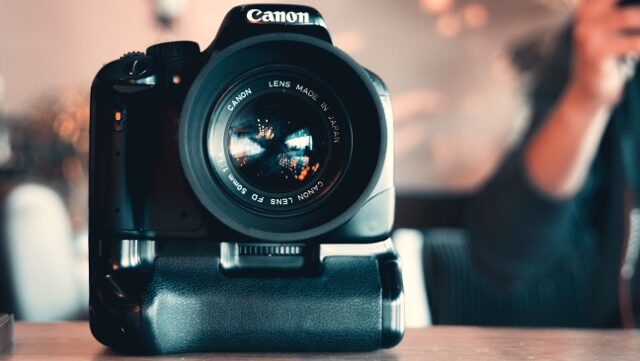Crop Sensor vs. Full Frame Camera Choosing the Right Format for Your Photography Needs
Introduction:
When it comes to choosing a camera, one of the fundamental decisions photographers face is selecting the sensor format. The two most common sensor formats in digital cameras are crop sensor and full frame. Understanding the differences between these formats is essential in making an informed decision that aligns with your specific photography needs and budget. In this article, we’ll delve into the characteristics, advantages, and considerations of both crop sensor and full frame cameras.
Crop Sensor Cameras:
Crop sensor cameras, also known as APS-C or DX format, have a smaller sensor size compared to full frame cameras. This smaller sensor effectively crops the field of view, resulting in a narrower angle of view and magnification of the image. Generally, crop sensors have a crop factor of around 1.5x or 1.6x, meaning that the focal length of a lens will appear longer when mounted on a crop sensor camera.
Advantages of Crop Sensor Cameras:
- Cost: One of the significant advantages of crop sensor cameras is their affordability. They generally come at a lower price point compared to full frame cameras, making them a more budget-friendly option, especially for entry-level photographers or those on a tight budget.
- Reach and Telephoto Advantage: The crop factor of crop sensor cameras provides a telephoto advantage. This means that when using a lens with a longer focal length, you’ll achieve a greater reach and magnification, making it ideal for wildlife, sports, or any situation where you need to capture distant subjects.
- Lens Compatibility: Crop sensor cameras are often compatible with a wide range of lenses, including both crop sensor-specific lenses and full frame lenses. This versatility allows photographers to choose from a broader selection of lenses that suit their specific shooting style and needs.
Full Frame Cameras:
Full frame cameras feature a sensor that is equivalent in size to a traditional 35mm film frame. These cameras offer a larger sensor size, providing several advantages in terms of image quality and performance.
Advantages of Full Frame Cameras:
- Image Quality: Full frame cameras tend to excel in image quality, especially in low-light situations. The larger sensor size allows for better light-gathering capabilities, resulting in improved dynamic range, reduced noise, and better overall image quality.
- Wide-Angle Advantage: Full frame cameras offer a wider field of view compared to crop sensor cameras. This makes them well-suited for landscape and architectural photography, where capturing a broader perspective is desired.
- Shallow Depth of Field: Due to the larger sensor size, full frame cameras have a shallower depth of field, allowing for greater control over background blur and subject isolation. This is particularly advantageous for portrait and artistic photography, where achieving a beautiful bokeh effect is desired.
Considerations: Crop Sensor vs. Full Frame Camera
When choosing between a crop sensor and full frame camera, consider the following factors:
- Budget: Determine how much you’re willing to invest in a camera system, as full frame cameras tend to be more expensive.
- Shooting Style: Assess your primary photography genres and shooting preferences. If you often shoot wildlife, sports, or need telephoto reach, a crop sensor camera may be a practical choice. If you focus on landscape, portrait, or require superior low-light performance in wedding photography, a full frame camera might be more suitable.
- Lens Compatibility: Consider the availability and cost of lenses for the camera system you’re considering, as both crop sensor and full frame cameras have their respective lens options.
The choice between a crop sensor and full frame camera
It ultimately depends on your photography needs, shooting style, and budget. Crop sensor cameras offer affordability, reach advantage, and lens compatibility, while full frame cameras excel in image quality, wide-angle capabilities, and shallow depth of field. Assess your requirements, do thorough research, and consider your long-term goals to make an informed decision that empowers your photographic journey.
Remember, both crop sensor and full frame cameras have their merits, and the most important factor is how you utilise your gear to create compelling and meaningful images.
Why Full Frame Cameras are the Choice for Wedding Photographers
Crop Sensor vs. Full Frame Camera
Wedding photography is a specialised genre that requires capturing beautiful moments in various lighting conditions and delivering exceptional image quality. Choosing the right camera for wedding photography is crucial, and many professional wedding photographers opt for full frame cameras.
Superior Low-Light Performance:
Wedding venues often present challenging lighting situations, with dimly lit interiors and low-light conditions during evening receptions. Full frame cameras have larger sensors that capture more light, resulting in better low-light performance. This allows wedding photographers to maintain image quality, reduce noise, and preserve details in challenging lighting environments, ensuring stunning images even in difficult conditions.
Enhanced Dynamic Range:
Weddings are filled with a wide range of lighting scenarios, from bright outdoor ceremonies to indoor receptions with contrasting light sources. Full frame cameras typically have a larger dynamic range, meaning they can capture a broader range of tones and details in both highlights and shadows. This enables wedding photographers to retain intricate details in the bride’s white dress while preserving the delicate nuances of the groom’s dark suit, resulting in well-balanced and visually appealing photographs.
Beautiful Bokeh and Shallow Depth of Field:
One of the artistic aspects of wedding photography is achieving a pleasing background blur and isolating the subject. With their larger sensors and wider aperture lenses, full frame cameras offer a shallower depth of field and the ability to create a beautiful bokeh effect. This allows wedding photographers to separate the couple from the background, creating captivating images that draw attention to the main subjects and evoke a sense of romance and intimacy.
Wide-Angle Capabilities:
Wedding photographers often need to capture group shots, wide venue shots, or scenic landscapes that showcase the wedding location. Full frame cameras provide a wider field of view compared to crop sensor cameras, making them ideal for capturing expansive scenes and fitting large groups into the frame without distortion. The wider perspective allows wedding photographers to tell a more comprehensive story of the wedding day and capture the grandeur of the surroundings.
High-Resolution Image Quality:
Wedding photographs are cherished memories that couples will treasure for a lifetime. Full frame cameras typically offer higher resolution sensors, allowing wedding photographers to capture fine details, intricate patterns on wedding attire, and emotional expressions with exceptional clarity. The higher resolution also provides flexibility during post-processing, allowing for cropping and printing larger prints without compromising image quality.
For wedding photographers, investing in a full frame camera offers significant advantages in terms of low-light performance, dynamic range, bokeh capabilities, wide-angle capabilities, and high-resolution image quality. These features allow photographers to capture the essence and emotion of weddings in stunning detail, ensuring that the couple’s precious memories are preserved beautifully.
While full frame cameras may come at a higher price point, their capabilities and the resulting image quality make them an invaluable tool for professional wedding photographers who strive to deliver extraordinary photographs. Ultimately, the choice of camera depends on the individual photographer’s preferences, shooting style, and budget, but full frame cameras are undoubtedly a popular and reliable choice in the wedding photography industry.
The Benefits of Crop Sensor Cameras for Wildlife Photography
Crop Sensor vs. Full Frame Camera
Wildlife photography requires capturing elusive subjects in their natural habitats, often from a distance. When it comes to choosing a camera for wildlife photography, many professionals opt for crop sensor cameras.
Extended Reach:
Crop sensor cameras have a smaller sensor size compared to full frame cameras, resulting in a crop factor. This crop factor effectively magnifies the focal length of lenses, providing wildlife photographers with an extended reach. It allows them to capture distant subjects as if using a longer lens, making it easier to photograph wildlife from a safe distance without disturbing or alarming them. This reach advantage is particularly beneficial when photographing shy or dangerous animals, ensuring that the photographer can document captivating wildlife moments while maintaining a respectful distance.
Cost-Effectiveness:
Wildlife photography often requires long telephoto lenses to bring distant subjects closer. Full frame cameras combined with these specialised lenses can be costly. In contrast, crop sensor cameras are generally more affordable, making them a budget-friendly option for wildlife photographers who want to invest in quality lenses without breaking the bank. This cost-effectiveness allows photographers to allocate more of their budget towards acquiring the necessary lenses, which are essential for capturing wildlife in detail.
High Frame Rates:
Wildlife photography demands the ability to capture fast-paced action and fleeting moments. Crop sensor cameras often offer higher continuous shooting speeds and frame rates compared to full frame cameras in a similar price range. This capability enables wildlife photographers to capture a series of images in rapid succession, increasing the chances of capturing the perfect wildlife moment, such as a bird in flight or an animal’s swift movement. The faster frame rates help photographers avoid missing critical shots, ensuring they don’t miss those elusive wildlife interactions.
Lighter and More Compact:
When photographing wildlife in remote locations or during extended expeditions, the weight and size of gear become crucial considerations. Crop sensor cameras and lenses tend to be lighter and more compact compared to their full frame counterparts. This portability allows wildlife photographers to navigate rugged terrains, manoeuvre quickly, and carry their equipment for extended periods without fatigue. The reduced weight also facilitates the use of handheld shooting techniques, providing more flexibility in the field.
Crop sensor cameras offer unique advantages that make them a popular choice among wildlife photographers. The extended reach, cost-effectiveness, high frame rates, portability, and increased depth of field are all factors that cater specifically to the demands of wildlife photography. Ultimately, the choice of camera system should be based on individual preferences, shooting style, and budget, considering the specific requirements of capturing the extraordinary beauty and behavior of wildlife in their natural habitats.
Note: This article serves as a general guide and should not replace personal research and hands-on experience when choosing a camera system.
Cover Photo by Thijs van der Weide: https://www.pexels.com/photo/black-canon-dslr-camera-1093065/







